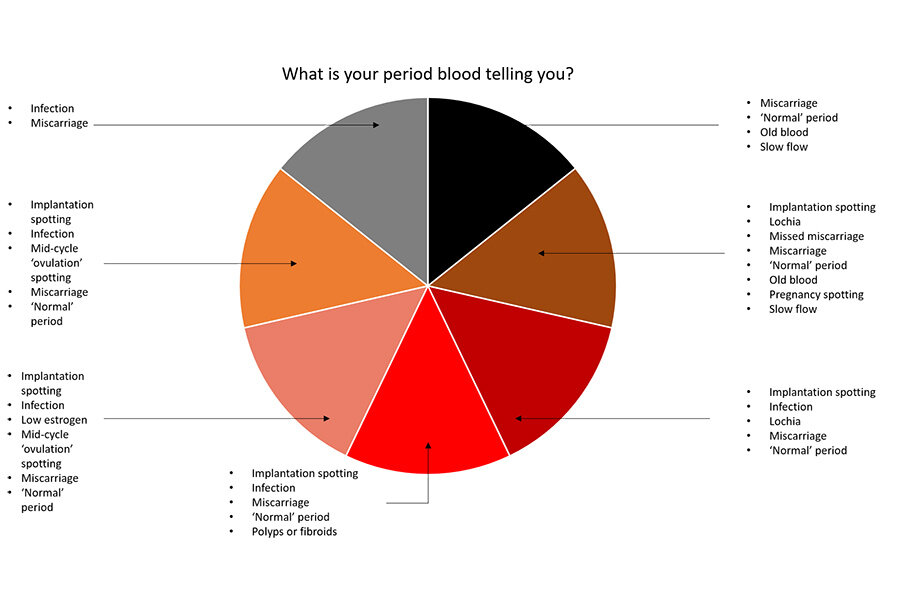What is Your Period Blood Telling You?
There are often no symptoms in early stages of cervical cancer. The most common symptom, if any, is abnormal vaginal bleeding. If you get abnormal bleeding in between periods or during or after sex, contact your GP. You should be referred to a specialist within 2 weeks, do not worry, it does not necessarily mean you have cervical cancer; however, it is best to get it checked out as soon as possible!
It can be difficult to know what our bodies are telling us. We made the easy-to-read chart above to help you identify what vital health signs your period is indicating.
Black
It is normal to see black blood at start or end of your period. The blood is only this colour as it has taken some time to leave the uterus.
Brown
Brown blood is like black blood. It has had time to oxidise within your body and changed from a red colour to brown at the beginning or end of your period. It can also be related to lochia, which is bleeding for the first four to six weeks after giving birth. It typically begins bright red and heavy, then gradually changes to a darker shade as the flow decreases. You may experience spotting during pregnancy. Some women experience ‘missed miscarriage’, this is when the foetus has stopped developing from the uterus for at least 28 days. Brown discharge can be a symptom of cervical cancer.
Dark red
Dark red blood can occur if you have been lying down for a while. You are likely to see this colour at the end of your period. This can also be related to lochia.
Bright red
Fresh quick flowing blood is bright red; therefore, you are likely to see this at the start of your period. Some women find their blood gets darker as their flow slows, however other people find their blood stay bright throughout. If you see bright red blood between periods, this can be associated with infections like chlamydia and gonorrhoea. During pregnancy, everyone is different; it could be a sign of miscarriage; however, some women have given birth to healthy babies while bleeding during pregnancy as well. Bright red blood can also indicate polyps or fibroids growths in the uterus. They are noncancerous and may be large or small. They can cause pain or pressure and heavy flows during your cycle.
Pink
Pink blood is diluted blood due to mixing with your cervical fluid. This can also be linked with lochia. It can also indicate low oestrogen levels, which can be caused by being on hormonal birth control. It can be seen during mid-cycle spotting, as well as an indication of miscarriage. Pink discharge can be a symptom of cervical cancer.
Orange
Blood can also appear orange when mixed with cervical fluid. Some people see orange or pink spotting around implantation time or around 10 to 14 days after conception. Orange blood may also be an indication of a bacterial infection.
Grey
This could be a sign of bacterial vaginosis. Grey discharge may also be a sign of miscarriage.
If your blood or discharge is alarming you, it is always best to see your doctor.
Sources:
https://www.nhs.uk/conditions/cervical-cancer/
https://www.healthline.com/health/womens-health/period-blood#gray-periodblood

